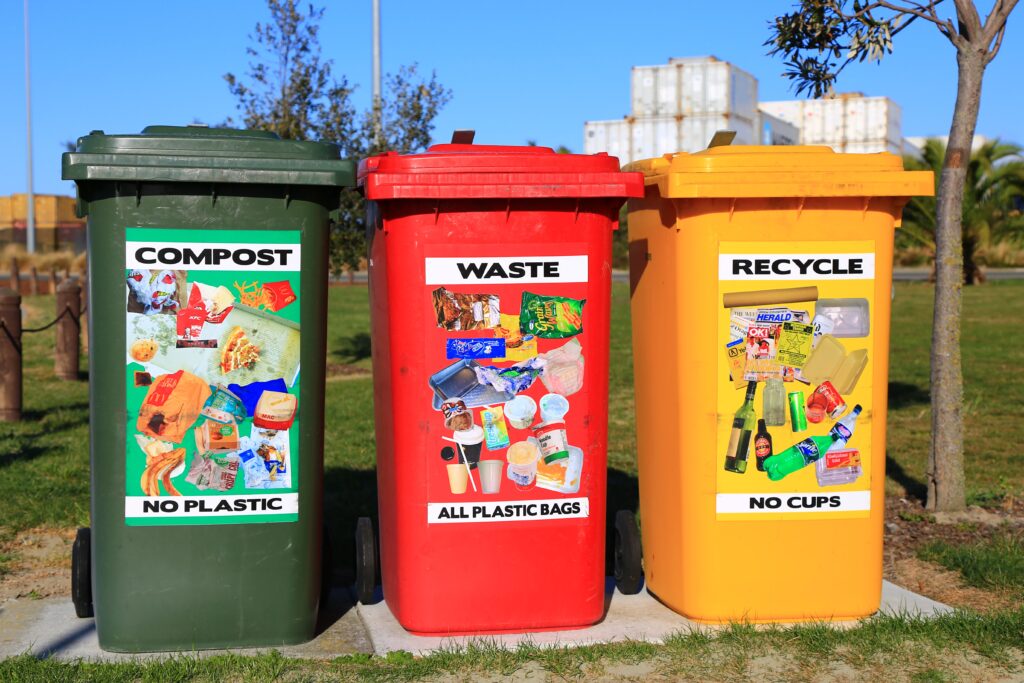America has a waste problem – not only is it expensive, but it is a daunting issue for all. Public waste management operations in many cities cannot absorb population growth, urban expansion, and the overwhelming increase of industrialization. New systems, locations, equipment, and technology are required. Public officials work overtime to control waste management throughout the country because, without continual effort, the fear is that the waste management problem will impact public health, pollute the environment, and drown some regions of America in toxicity.
To the surprise of no one, the United States is one of the world’s largest trash generators. In 2018, the most recent year for which data is available, approximately 300 million tons of solid waste had to be disposed of in America. The task is enormous, costly and something few people rarely contemplate.
Waste management costs are significant because numerous and diverse types of facilities are required. Also required are transfer stations, recovery locations, technology, and lots of equipment. All the collected waste must first be screened for hazardous materials and recyclables before any transfers occur. The task of managing waste often costs communities millions.
Landfills occupy large areas of land, and when a landfill is closed, the property is designated as contaminated unless or until the land is remediated. Many local government officials are currently experimenting with ways to recover the brownfields. Some are converting them to parks. Others are constructing solar farms over the property. There are 5,000 solar farms in the U.S. and 300 of them are solar farms. That trend is growing, and 50 solar farms have been constructed over landfills since 2019.
The task of managing waste has resulted in numerous innovative technological solutions. One technology solution for managing waste creates ‘smart garbage receptacles’ that send messages for service. San Francisco has been piloting another type of sensor program that directs utility workers to areas where garbage collection is inadequate. The project has involved installing 1,000 sensors on garbage cans across the city for $300,000. As surprising as it may sound to some, waste management in America results in thousands of contracting opportunities each year and promotes various types of new technology.
The King County Solid Waste Division in Washington plans to select a site, design a construction project, and build a new, modern recycling & transfer station to meet the region’s growing need for waste management services. The projected cost of this project is $174 million. The new site will replace an existing and outdated transfer station that can no longer meet the demand for recycling services. New transfer stations are needed in numerous other states as well.
City leaders in Chattanooga, Tennessee, have announced expansion plans for a 46-acre park on property that was once an old landfill. The location was a landfill in the 1940s and later became a ballfield. The property, however, was closed in 2003 because of methane gas emissions that were occurring. A decade later, the site was reopened as an outdoor museum. The new plan for expanding and enhancing the property carries an estimated cost of between $80 million and $100 million. The upcoming project will involve the construction of three soccer fields, a sculpture garden, a series of trails, ravines for water retention and bridges over the waterways. The planning process for this effort began in early 2023, and some parts of the construction will start in 2024. No solicitations have been issued yet.
The city of Baltimore’s Department of Public Works will oversee an expansion project for what is known as the Quarantine Road Landfill. The $99 million project is necessary to accommodate growing waste disposal needs. The cost of this effort will likely increase because of inflation. The project is in the engineering phase and solicitation documents are scheduled for release in the coming months. This effort will be divided into two phases. The first phase will involve connecting two landfills, eliminating the stretch of road that separates them and digging a quarry to join them. A roadway will be rerouted, and utilities will be relocated.
Phase two of the project will add three new trenches (cells) lined with clay or another firm material designed to protect water sources.

Photo by Nareeta Martin on Unsplash
The Ley Creek Planning Committee has outlined plans for a new Resource Management Facility in Liverpool, New York. The new facility will process trash for Onondaga County and the project cost is estimated at $38 million. Currently in the design phase, the project is scheduled for spring 2024. Plans call for demolishing the original facility and constructing a new building. Work will also include mass grade changes and relocating utilities. Construction components include an employee facility for staff members, a sanitary pump station upgrade, a maneuvering apron, a large concrete area surrounding the new building that will allow for the movement of trucks and other large vehicles.
The city of Springfield, Missouri, will invest $30 million in a new campus for its Environmental Services Department, which oversees its recycling and solid waste services. Plans call for a single campus on a local greenfield ample enough to sustain anticipated growth and consolidate all related operations into a single building. The project will include climate-controlled garages for as many as 70 vehicles, additional office space for administrative work, new locker facilities, improved fencing and secure gating that will require a key card for access to the new campus. City leaders have started accepting qualification statements from architecture firms and the design phase will begin soon. Solicitations for construction will follow and the plan is for this project to be completed in 2026.
There are abundant immediate and upcoming opportunities for private sector firms to engage with public officials currently working diligently to provide waste management services to growing populations. Each project requires a need for construction, engineering, technology, equipment, landscaping, and professional services of various types. These are not the most common types of contracting opportunities, but they are, without doubt, among the most critical types of collaborative initiatives in high demand nationwide.

As President and CEO of Strategic Partnerships, Inc., Mary Scott Nabers has decades of experience working in the public-private sector. A well-recognized expert in the P3 and government contracting fields, she is often asked to share her industry insights with top publications and through professional speaking engagements. Get an exclusive look at upcoming trends and insider tips from Mary herself on the SPI blog.
Tags: brownfield recovery, Clean Energy, Collaboration Opportunities, engineering projects, environmental impact, environmental services, Government Contracts, green technology, infrastructure development, innovative technology, landfill remediation, Mary Scott Nabers, Public Health, Public-Private Partnerships, recycling, resource management, smart waste solutions, solid waste, SPI, Strategic Partnerships, Sustainability, urban expansion, waste management






 RSS Feed
RSS Feed